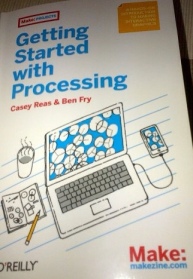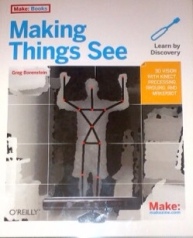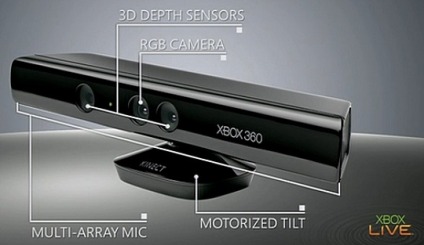Blog Archives
Processing and SEN
This summer, I am going to start to learn coding, specifically Processing. This is a development platform that allows you to write software to make images, animations and interactions. It was originally developed to make programming graphics easier than using other languages such as C++ and Java.

Now you might be asking my I am learning this language and what benefit it might have for the students I worked with. I have previously written about different natural user interfaces like the Microsoft Kinect and the software I have used with them – Visikord and Po-motion. These programmes are really good and I have seen some great engagement by students whilst using these. What is clear is the students love to explore the different aspects of the applications and the natural user interfaces allow the students to do things they simply could not do or access before. From discussions with colleagues at school, on Twitter (@trinityfieldsit) and looking at what Ceri Williams (@cerirwilliams) has been working on, this has prompted me to start learning to code so that I can develop different programmes that users can interact with using the Kinect. I am also interested in how different program's work and hope that by learning to code simple interactive graphics programmes, I will be able to gain a better understanding of how developers create apps and software.
By being able to develop our own applications, the hope is that we will be better placed to respond to the needs of our students and create exciting and engaging applications. It going to be a long process but if you are interested I would recommend the following books –
'Getting Started with Processing' – Casey Reas and Ben Fry – gives you a introduction to the Processing language and gives you practical examples to work with.
'Making Things See' – Greg Borenstein – a hands-on guide that takes you through the steps to create applications that uses the Microsoft Kinect in the Processing language.
I will post on the blog the progress I make on this project but in the meantime if you are interested in using the Kinect with SEN check out the Kinect in the Classroom page of my blog or look at the Kinect in SEN wiki which represents the work of the Personal Learning Community of @trinityfieldsit, @LittleAngelsSch, @cerirwilliams and myself. The idea of the wiki is to showcase the excellent work being done by those using the kinect in SEN.
Kinect in the Classroom
Kinect is a motion sensing input device which allows the the user to control and interect with a range of apps using gestures and spoken commands. The device features a RGB camera, depth sensor and multi-array microphone which means it can provide full body 3D motion capture, facial recognition and voice recognition.
The Kinect was originally released to work with an X-box 360 to play games, but since the launch the release of open source drivers meant the Xbox Kinect could be connected to a PC which led to developers creating a wide range of applications for the Kinect ranging from controlling on screen avatars to playing music using movement.
In February, Microsoft released the Windows version of the Kinect along with the software development kit with a view to promote development for the device.
I feel that there is lots of potential for the Kinect in a special needs environment from using in classrooms to support teaching and learning,to providing a wide range sensory experiences for student.
Now for those wanting to try this out you have two options which I hope to explain below:
Xbox Kinect
The Xbox Kinect will work on a Windows XP (or higher) PC and you will need to install the drivers to get it working. The easiest way to get started is to visit http://visikord.com/download#demoplay and download the software. Included with this are the drivers you need to get the Kinect working on you PC. There are other ways to install the drivers but I want to keep it simple and also you get to try out some excellent software as well. (Have written post on visikord)
Once you have the Kinect up and running visit the OpenNI arena which is open-source community which you can download different applications for the Kinect. (Would recommend Fuzzy Painter)
Windows Kinect
The Windows Kinect will only work with Windows 7 PC and you can download the drivers and Software Development Kit from http://www.microsoft.com/en-us/kinectforwindows/develop/developer-downloads.aspx
Hardware requirements:
32-bit (x86) or 64-bit (x64) processors
Dual-core, 2.66-GHz or faster processor
USB 2.0 bus dedicated to the Kinect
2 GB of RAM
Graphics card that supports DirectX 9.0c
Also to start coding and developing you own applications you will need Microsoft Visual Studio which is available to download here:
http://www.microsoft.com/visualstudio/en-us/products/2010-editions/express
The Windows Kinect is relatively new to developers and as there are not as many applications for it as yet. I feel that within the next year we will begin to see more and more applications arrive as this version is being actively supported by Microsoft.
Here are some more links for you to explore some of the applications being developed for Kinect:
Some excellent blogs to look at regrading the use of the Kinect in Education:
Primary Parper – Ceri Wiiliams
I would be interested to hear from others who have used the Kinect System in education and how they have been using It. The next step for me will be to add some mini reviews of applications I have used in the classroom.
Kinect and SEN – Visikord – Turning Music into Visuals
This post leads on from a previous one which looked into using some software called Po-motion to create an interactive wall display. Since installing this system, I have been in contact with a fantastic teacher, Anthony Rhys (@trinityfieldsit) who has been doing some fantastic work with his students using the Kinect system and Ipads. He has also set up a great wiki at on apps to use with SEN http://ipad-sen-plcsouthwales.wikispaces.com/ He was the one who originally pointed me in the direction of the Visikord software and as soon as I got our hands on a Kinect I knew I had to try it out.
Visikord is a piece of software originally designed for nightclubs and parties. It turns your TV, smartboard, projection etc. into a mirror-like ‘smart screen’ which gives off stunning visual effects as someone moves to music. It allows the user to interact with the music both through sound but more importantly vision. The software works on a PC (Windows XP or higher) and you need a Microsoft Kinect or Asus Xtion. The software is free to download as a demo version and this is the version I have been using in class.
Here is a video example of Visikord in action:
The link to download the software is http://visikord.com/introduction/visikord-for-home
The setup I used is an XP laptop with an Xbox Kinect connected. Installed on this are the Primesense and OpenNi drivers which come with the download of Visikord. I trialled this with some of my sixth form students and they instantly liked trying to produce different effects in time with the music. Also those students who tend to shy away from physical exercise, wanted to have a go and were very active and wanting to interact with the music.
Later on, one of our PMLD students had a go with the software. What was great to see was the instant reaction to the sound and the visuals coming from the screen. Though the student only had limited movement the Visikord software still pick this up and produce visuals to match the music. They were attracted to the bright visuals and in turn were responding to these and the music. I really like the potential for using Visikord and the Kinect especially in relation to our sensory room at school.
Over the next few weeks I will add a Kinect in the Classroom section to the blog which will look into the different options for setting up the Kinect (windows or xbox version) and recommend some of the open source software that is being developed that would be useful for SEN students.



